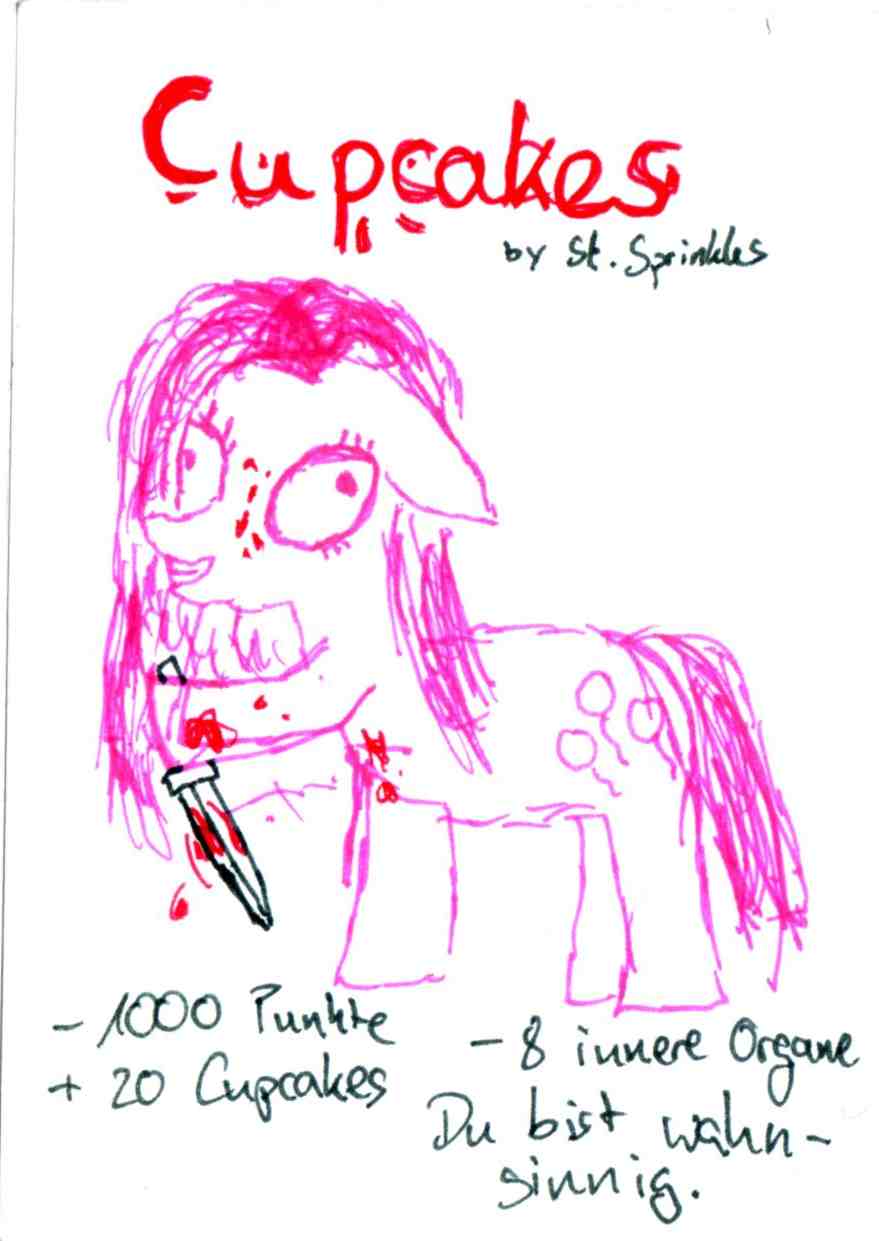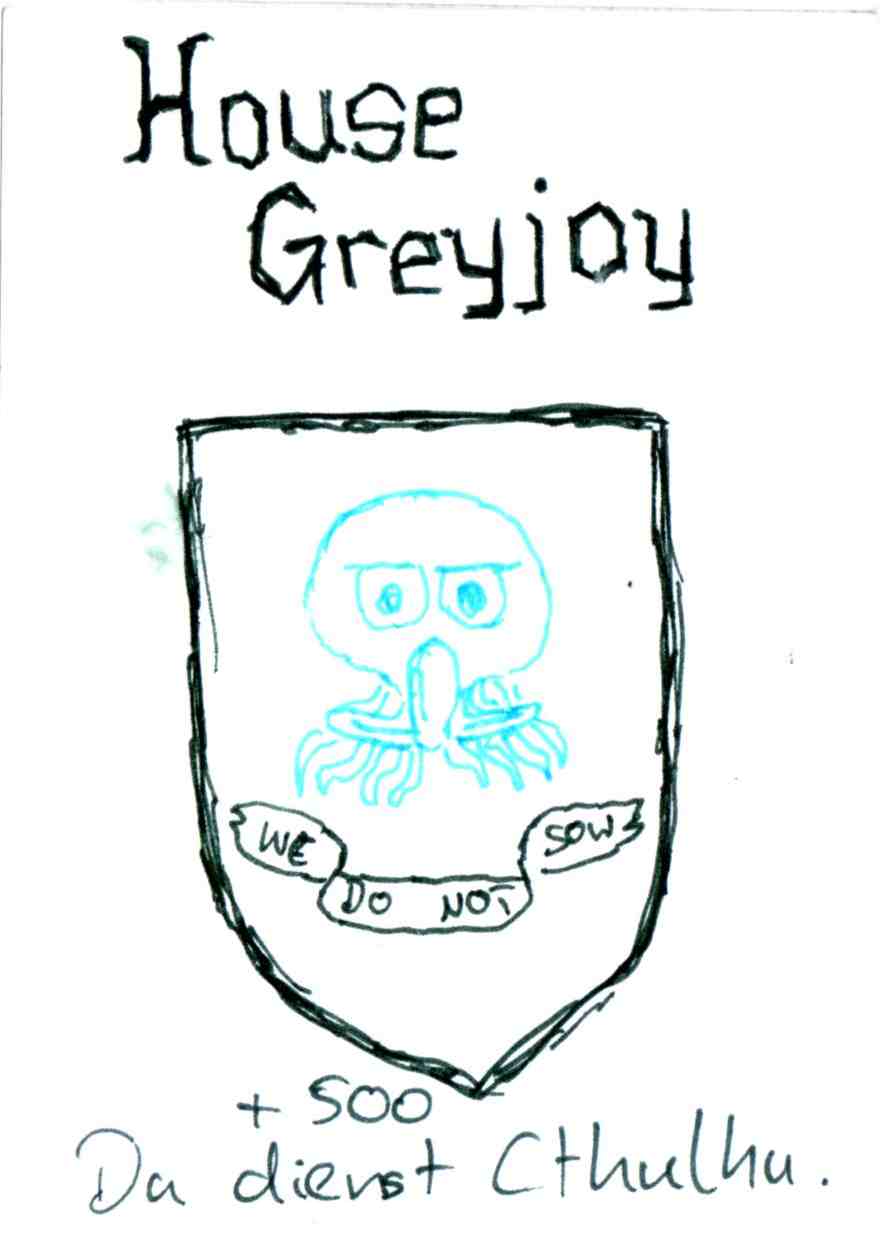Communications from Elsewhere hat geschrieben:[table=border:1px solid #333333;][tr=border: none;][td=border: none;]
The original page may have changed since May 8, 2002, when this copy was stored.
[/td][/tr][/table]
1000 Blank White Cards
(The Discordian Intelligence Agency Edition)
[tab=30]1000 Blank White Cards is a card game, the purpose of which is to create the cards you're playing with. The original version of the game was created by Nathan McQuillan of Madison, Wisconsin. I originally learned about that version of the game
here , although that page hasn't been updated in a while.
[tab=30]This new edition of the game was created in late 2001 by Riff Conner, and has been extensively playtested by the Discordian Intelligence Agency - Riff Conner, Mark and Kelly Hennies, and David Youtz - along with various guest stars. Several
rules guidelines have been added, for the purpose of giving it a more gamelike framework.
What You Need:
[tab=30]* 3-6 players
[tab=30]* A pen for each of them, preferably black. Don't use felt-tips - they soak right through the cards. Pilot Roller-Balls are great.
[tab=30]* A bunch of... blank white cards. We use unlined index cards cut in half. You will need 40, 60, or 90 of them, depending on how many players you have and whether you've played before. It's also good to have some extras on hand.
[tab=30]* If you
have played before, you will need the stockpile of cards you had left over from the last game.
The Pre-Game Phase:
[tab=30]First, you need to set up the deck. If you have 3 or 4 players, put a stack of 20 blank cards in the middle of the table. (If you have 5 or 6 players, use 30.) Then, if you have played before, add 20 (or 30) random cards from the stockpile of previously-made cards. (If you haven't played before, add 20 or 30 more blanks instead.)
[tab=30]Then, pass some blanks out to the players. If there are 3 or 5 players, everyone gets 6; if 4 or 6, they get 5. Everyone will now take a few minutes to turn their blanks into actual cards (this will be explained later on). When everyone's finished, gather up their cards and add them to the deck. You now have either a 60 or 90 card deck, depending on the number of players. (Actually, if you're doing a 3-player game, you only have 58 cards in the deck. Anal-retentive gamers should feel free to add two more blanks.)
[tab=30]Shuffle the deck thoroughly. (Don't bother trying to actually shuffle them - they're too flimsy. Just spread them out on the table and push them around 'till they're well-mixed.) Deal out five cards to each player. Game on!
Playing the Game:
[tab=30]Play begins with the player to the dealer's left, and generally goes clockwise. On your turn, take the top card from the deck (assuming there are cards left in the deck), and then play a card from your hand. You can play a card either on yourself, on another player, or to the center of the table (in which case it affects all the players, including yourself). If the card has a point value or some other sort of lasting effect, it stays in front of the player it was played on (or in the middle of the table) until it is somehow nullified, discarded, or removed by another card. Otherwise, it is simply placed in the discard pile.
[tab=30]If you have a blank card in your hand, grasp your pen firmly and turn the blank into a playable card (we're getting to that). It's best to do this during the other players' turns, so as to hold up the game as little as possible.
[tab=30]If you cannot play a card (meaning you have no blanks, and none of the cards in your hand can be played in the current situation), then draw a second card from the deck and pass your turn. If you can't do this because there are no cards left in the deck, the game is over. Anyone with cards left in their hands can show them around before discarding them, and then the winner is determined.
Winning:
[tab=30]Total up the point value of the cards in front of you, and add the point values of any cards played to the center of the table. This is your score (and yes, it can be a negative number). The player with the highest score wins! Woo!
Epilogue:
[tab=30]After the game is over, you will have a large pile of cards. The next time you play, you'll be using a random selection of cards from this pile, so naturally you'll be wanting to whittle it down a bit so that only the best cards get re-used. This is what the Epilogue phase of the game is for.
[tab=30]Take all the cards from the game you just finished, as well as any previous cards that didn't get used, and spread them all out on the table, face-up. Then decide how large a stockpile you wish to keep. If this is only your first or second game, start with 30. If you've played several games, go to 60, and once you've played a whole lot of games and have lots of excellent cards, you can advance to a 90-card stockpile. Divide this number by the number of players you've got - we'll call the result "X". So for example, if you want to keep a 60-card stockpile, and there are five players at the table, X equals 12.
[tab=30]Each player then examines the collection of cards and selects their favorite X cards out of all of them. You now have a stockpile, consisting of the best cards that the players have made so far. Whoever is given the task of storing them can snap a rubber band around the deck, and put it on a shelf in preparation for next time. The remaining cards can be thrown away, carefully archived in a huge library of three-ring binders, or baked into a tasty casserole - your choice.
[table=border:1px solid #333333;][tr=][td=]
![eatin[1].jpg](./download/file.php?id=242)
- eatin[1].jpg (7.51 KiB) 3401 mal betrachtet
[/td][td=]
* First, a title. This is what the card is called. Yep.
Â
Â
Â
Â
Â
Â
* Then, a picture of some sort. Artistic ability is not required; if you can do a stick-man, you're ready to go. (During one game, we had so many stick-men on the table, I was forced to implement a card called "Stick-Figure Genocide" to get rid of them all.) If you play a lot, you will discover that your artistic skills gradually improve. Well, your cartooning skills, anyway.
Â
Â
Â
Â
Â
* And finally, a description of what the card does. This can be a point value, some sort of instruction, or both, or neither.
[/td][/tr][/table]
[tab=30]Point values normally range from 100 to 1000, in 100-point increments, and can be either positive or negative. Other instructions can be pretty much anything: normal card game instructions (Lose a Turn, Draw Another Card, etc.), unusual instructions (Dance Like a Chicken On Fire), or something totally bizarre (Eat This Card For Absolutely No Psychedelic Effect).
[tab=30]And that's really all you need to know. Run with it!

